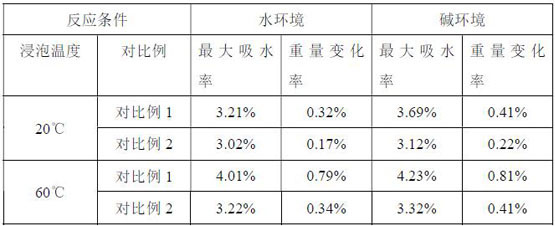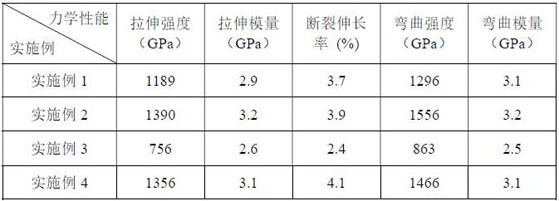A kind of polyurethane resin composite material for civil engineering and its pultrusion molding process
The technology of polyurethane resin and composite material is applied in the field of preparation of large-scale composite profiles, which can solve problems such as low mechanical properties, achieve uniform content distribution, improve mechanical properties, and reduce resin fluidity.
- Summary
- Abstract
- Description
- Claims
- Application Information
AI Technical Summary
Problems solved by technology
Method used
Image
Examples
Embodiment 1
[0037] A pultrusion process of polyurethane resin composite materials for civil engineering, comprising:
[0038] Preparation of component B: Weigh 93 kg of castor oil and add it into a closed reaction kettle, raise the temperature to 120°C, vacuumize while stirring, stop vacuuming and heating after 2 hours, cool down to 80°C and add 121.6 kg of 100LL Carbodiimide modified MDI (Wanhua Company) was continued for 2 hours to obtain a prepolymer with an NCO content of 27%.
[0039] Preparation of component A: Weigh 80 kg of polyester 2915 (Stepan), 10 kg of castor oil polyol, 8 kg of 550D release agent (Technick Products), and 2 kg of activated 3A that has been baked at high temperature Molecular sieve, catalyst 0.5 kg FOMREZ UL-28 and 0.5 kg K-5218, a total of 1 kg, 1 kg of UV absorber benzophenone and 1 kg of anti-aging agent 2,5-ditertbutylhydroquinone are added to the stirring tank and stir well.
[0040] Fabric panels made of fiberglass are processed using the following pultr...
Embodiment 2
[0050] Wherein, the preparation process of component A and component B in this embodiment is the same as that of embodiment 1, except that the fabric sheet is replaced with fiber yarn. The specific extrusion molding process is as follows:
[0051] Step 1. The components A and B pumped out by the metering pump according to a predetermined ratio are mixed by a static mixer and then enter the sealed injection box of the two-component polyurethane pultrusion system;
[0052] Step 2. Dry and cool the fiber yarn in a vacuum oven, and then, driven by the tractor, enter the injection box at a certain tension and speed, until it can just cover the entire hot-press injection box;
[0053] Step 3: After drawing the resin-impregnated fiber yarn into the front section of the heating segmental heating mold, heating the front section of the segmental heating mold to 100° C., and maintaining constant temperature heating;
[0054] Step 4. While performing step S3, apply a pressure to press do...
Embodiment 3
[0060] The preparation process of A component and B component in this example is the same as that of Example 1, the difference is that the traditional production process is used to process the fabric sheet, and the specific extrusion molding process is as follows: A component and B The components are respectively imported into the two storage tanks A and B corresponding to the two-component glue supply system, and the fabric sheet made of glass fiber forms a certain tension from the creel through the yarn guide plate under the drive of the tractor, and is stretched at 280cm The speed of / min passes through the injection box connected with the two-component glue supply system (the injection frequency of the two-component glue supply system is 2Hz, the amount of glue injected each time is 200g, and the weight ratio of material B to material A is 1:1) , and make it fully infiltrated with the AB component mixed resin, enter the mold (the temperature of the three zones is 150°C, 180...
PUM
 Login to View More
Login to View More Abstract
Description
Claims
Application Information
 Login to View More
Login to View More - R&D
- Intellectual Property
- Life Sciences
- Materials
- Tech Scout
- Unparalleled Data Quality
- Higher Quality Content
- 60% Fewer Hallucinations
Browse by: Latest US Patents, China's latest patents, Technical Efficacy Thesaurus, Application Domain, Technology Topic, Popular Technical Reports.
© 2025 PatSnap. All rights reserved.Legal|Privacy policy|Modern Slavery Act Transparency Statement|Sitemap|About US| Contact US: help@patsnap.com


